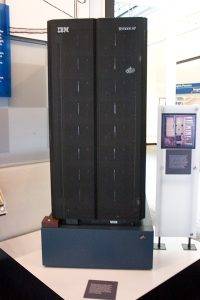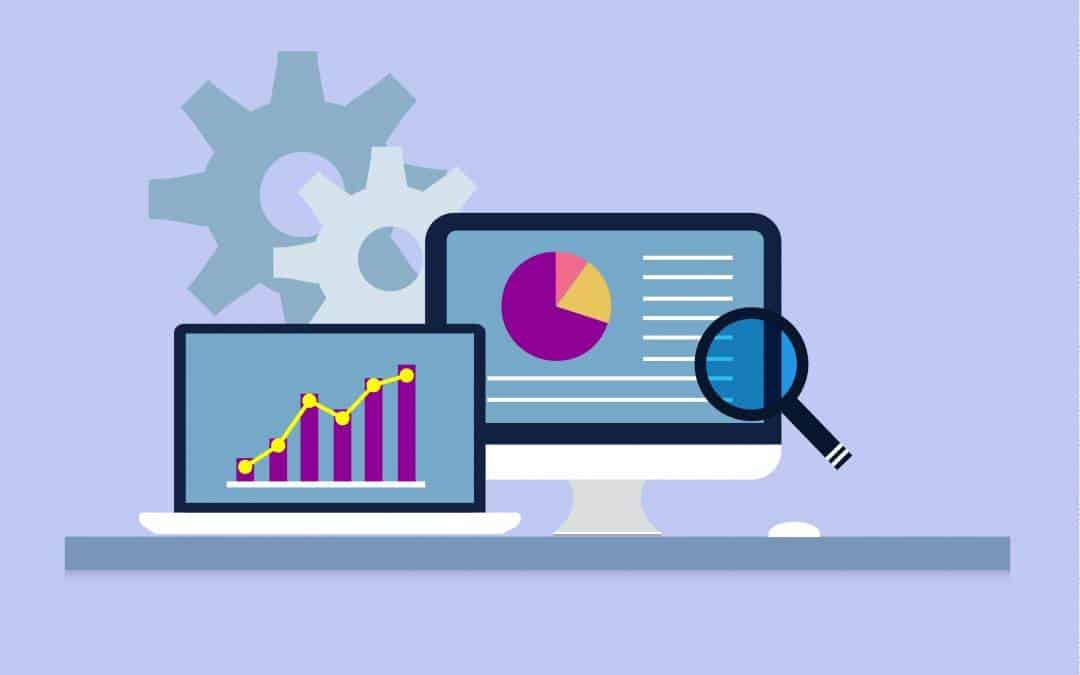Wir alle kennen das Problem: Ob Sie im E-Commerce, in der Unternehmenskommunikation, im Berichtswesen, im Marketing oder im Journalismus Ihr Geld verdienen: Der Erfolg von Unternehmen hängt immer stärker von hochwertigem Content ab, der einen möglichst individuellen Bezug zur Lebenswelt der Kunden haben soll. Textroboter können eine wertvolle Unterstützung bei der Erstellung günstiger und qualitativ hochwertiger Texte leisten.
Die einen greifen auf Textagenturen, um günstige SEO-Texte zu erhalten, andere haben eigene Content-Redakteure für die Texterstellung oder Produktmanager schreiben selber Produktbeschreibungen in Online–Shops usw.
Dann erfindet jemand im Silicon Valley eine neue Produktkategorie und in wenigen Monaten müssen einige zehntausend Produkte betextet werden – aktuelles Beispiel: Die sog. Wearables.
Die 3 Szenarien der Texterstellung
Wir unterscheiden bei uNaice nach den folgenden drei Einsatzbereichen:
- E-Commerce (Produktbeschreibungen, Kategorieseiten, Produktvergleiche)
- Funktionale Texte (Geschäftsberichte, Analysen, Beratungstexte, individuelle Newsletter)
- Publishing-Inhalte (Wettervorhersagen, Sportberichte, Börsenanalysen)
Die Gemeinsamkeit dieser drei Einsatzgebiete, die sie für günstige Content-Erstellung so interessant macht, sind:
Die Ausgangsbasis für die qualitativ hochwertige Automatisierung von Texten: Strukturierte Daten
Für jede Art von Text liegen in der Regel strukturierte Daten in Form von Tabellen, Datenbanken oder Listen vor. Diese Daten werten wir in einer ersten Analyse aus und leiten hiervon das Potenzial des Textroboters für die Contentproduktion ab.
Was macht ein Textroboter?
Nehmen wir die Roboter-Definition der Robotic Industries Association als Grundlage, dann können wir sagen:
“Ein Textroboter ist eine programmierbare Mehrzweck-Software für das Erstellen von Texten auf Basis strukturierter Daten. Die frei programmierbare Interpretation von strukturierten Daten macht ihn für verschiedenste Schreib-Aufgaben einsetzbar.”
Zugegeben: Das klingt ein wenig sperrig.
Einfacher gesagt:
Ein Textroboter kann darauf trainiert werden, aus Daten, wie sie in EXCEL-Tabellen, Produktdatenblättern oder Datenbanken zu finden sind, Texte zu produzieren, die von Menschen einfacher gelesen werden können.
- Daten nach menschlichen Erfahrungswerten interpretieren und in Texte einfließen lassen
- Unterschiede zwischen einzelnen Datensätzen oder Mengen feststellen und dem Leser erklären
- Datenfragmente zu einem sinnvollen Ganzen zusammenfügen
- Details erkennen, die dem menschlichen Auge entgehen und für den Leser aufbereiten
- Analysen und Berichte aus unüberschaubar großen Datenmengen erstellen
- Schneller schreiben, als 1000 Weltmeister im 10-Fingertippen
- günstig und schnell neue Texte mit Mehrwert für Kunden erzeugen
In 119 verschiedenen Sprachen kann unser Textroboter derzeit Content generieren. Dabei wird nicht einfach nur automatisch übersetzt, sondern jeder Text nach einem vorher durch Native-Speaker festgelegten Regelwerk individuell erstellt. Nur so ist gewährleistet, dass auf landestypische Tonalitäten eingegangen werden kann und die gewünschte Ansprache der Kunden erfolgt. Typische Übersetzungsfehler oder irritierende Wortwahl ist durch diese Vorgehensweise nahezu ausgeschlossen.
Sind Textroboter wirklich schon so gut?

Deep Blue by James the photographer – CC BY 2.0
Spielen Sie Schach? Dann ist es sehr wahrscheinlich, dass Sie schon einmal von einem Schachcomputer geschlagen wurden. Es dauerte bis 1996, bis ein Computer besser als der beste Mensch Schach spielen konnte. Das war damals Deep Blue von IBM, der Garri Kasparow besiegte.
Im März 2016 passierte das bis dahin nicht für möglich gehaltene und ein Computer schlug den Weltmeister im noch komplexeren Spiel Go Lee Sedol mit 3:0
Und Textroboter?
Sie beginnen in ihren Bereichen auch bereits besser als menschliche Partner zu arbeiten: Eine Studie unter 1024 Menschen ergab, dass die Probanden Artikel zu Sport- und Finanzthemen als objektiver und verständlicher empfanden, wenn diese vom Textroboter geschrieben wurden!
Woher weiß der Textroboter, was er schreiben soll?
Training und Programmierung. Wir nennen das bei uNaice Onboarding und Service Creation.
Dazu schauen sich zunächst unsere Experten die Datenbasis des Kunden an. Hieraus wird dann abgeleitet, wie viele Datensätze sich für die Textgenerierung bzw. Betextung eignen und eine Beurteilung abgeben, welche Qualität bei den Texten erzielt werden kann. Bei Bedarf werden die Ausgangsdaten umgearbeitet und im Anschluss geht es an die Programmierung des Textroboters.
Diesen Arbeitsschritt des Onboardings kann man sich als die Erstellung eines Regelwerks vorstellen, nach dem der Textroboter später die Daten aufnehmen und in menschliche Sprache umformen soll. Das Ergebnis sind datenbasierte Texte wie zum Beispiel Artikelbeschreibungen im Format Hauptsatz, Nebensatz. Hauptsatz, Nebensatz. Mit Hilfe des Onboardings lassen sich alle geeigneten Datensätze des Datenpools in der Breite betexten.
Die folgende Service Creation geht in die Tiefe. Hier werden nun die Produkte, Datensätze und Kategorien lokalisiert, bei denen eine gezielt umfangreichere Betextung höhere Wertschöpfung erzielt. Erweiterte Texte können bsw. folgende Ergebnisse erreichen:
- Verbesserung von Suchergebnispositionen durch SEO-relevante Texte
- Reduzierung von Beratungsaufwand durch verständlich formulierte Beratungstexte
- Umsatz-Steigerung durch datenbasierte USP-Erklärung in Texten
- Conversion Rate Optimierung mit Buyer Persona spezifischen Texten
- Cross- und Up-Selling Pozentiale nutzen, indem bisher nicht erkannte Produktkombinationen hervorgehoben werden
Besonders interessant werden die Ergebnisse, wenn die Eingangsdaten des Auftraggebers mit Sekundärdaten angereichert werden:
Stellen Sie sich vor, sie verkaufen Wein und haben eine EXCEL-Tabelle mit 50.000 verschiedenen Sorten Wein. Nehmen wir die Daten JAHRGANG und ANBAUGEBIET. Der Textroboter kann nun zusätzlich auf Wetterdaten des entsprechenden Jahres im Weinbaugebiet zugreifen und mit diesen Informationen vollautomatisch die Beschreibung des Weines anreichern und ohne Mehraufwand wertvolle Zusatzinformationen für die späteren Weinliebhaber bieten.
Was ist der Unterschied zwischen Textroboter und Chatbots?
Chatbots sind Softwareroboter, die über SMS, den Facebook-Messenger, Whatsapp oder Chatfenster auf Webseiten mit dem Nutzer kommunizieren.
Die Aufgabenstellung ist hier eine andere und Textroboter und Chatbots sollte man nicht verwechseln. Chatbots reagieren auf kurze Textmeldungen und geben an den aktuellen Gesprächspartner angepasste Antworten aus. Einige Beispiele hierzu finden Sie im Artikel “Futures of Texts”.
Die Fähigkeiten unseres Textroboters gehen über die kurze Dialogkommunikation solcher Chatbots weit hinaus: Für die Textroboter wird zunächst von Menschen ein Regelwerk zur Betextung erstellt, das perfekt zur Tonalität des Betreibers passt und von unseren Experten auf die Ansprache verschiedener Buyer Personas optimiert wird. Der Textroboter erhält eine Auswahl von Variablen um einzigartige Texte verfassen zu können und Varianten zu Ausdrücken, durch die Texte interessant und abwechslungsreich gestaltet werden.
Die Konfiguration zum Textaufbau ermöglicht beispielsweise Satzlängen, die an Leserzielgruppen ebenso angepasst werden können, wie an beliebig viele Ausgabegeräte. Texte auf Computer-Displays können relativ lang sein und auch auf weniger relevante Details eingehen. Wohingegen Texte auf Smartphones mit kleineren Displays kürzer und komprimierter ausgegeben werden müssen, damit Leser nicht ermüden und schnell die wichtigsten Details erfassen können. Das Priorisieren solcher Features ist ebenso ein Bestand beim konfigurieren des Textroboters, wie die Erstellung von Satzvarianten, Synonym-Containern und das Einflechten von Sekundärdaten im passenden Kontext.
So konfiguriert erlaubt der Einsatz des Textroboters die Erstellung umfangreicher und komplexer Texte, die auf Knopfdruck in beliebige viele und dennoch einzigartige Varianten verwandelt werden können, wie auch die Erstellung einzelner Text-Abschnitte bis hin zu Dialog-Texten.
Zukunftsausblick
Es ist fast ein bisschen vermessen, bei einer absoluten Zukunftstechnologie den Blick in die Kristallkugel zu wagen, aber insbesondere bei der Erwähnung von Chatbots ist klar:
Diese beiden Systeme könnten in Zukunft hervorragend zusammenarbeiten:
Ein Chatbot nimmt eine menschliche Anfrage an, gibt die relevanten Informationen an einen Textroboter weiter, der aus verschiedenen Datenquellen eine hilfreiche Antwort formuliert und der Chatbot gibt sie an den Fragesteller zurück.
Für die nächsten zwei bis drei Jahre werden Textroboter zunächst einmal dazu eingesetzt werden, die Tabellen und Artikel-Daten-Wüsten der heutigen Webseiten für Menschen lesbar zu machen und in wertvolle Zusammenhänge zu bringen.
Danach werden sie sich auf die Herausforderung des mobilen Einsatzes stürzen und in Echtzeit auf menschliche Fragen reagieren, Datenquellen heranziehen und on-the-fly sinnvolle Antworten texten.
Was der Mensch noch immer besser kann
Sie denken jetzt sicher: “Aber wir können uns doch nicht vollständig von Maschinen abhängig machen!”
Das machen wir auch nicht. Es gibt immer noch Bereiche, in denen der Mensch dem automatischen Textgenerierer überlegen ist, wie Ironie und Sarkasmus verstehen oder emotionale Wertungen treffen.
Aber:
Der Textroboter wird von Menschen trainiert und kann somit durchaus bestimmte Trigger in den Eingangsdaten interpretieren und darauf mit emotional gefärbten, individuellen Texten reagieren und so durch menschliche Sprache im Output auch die Gefühlswelt der Zielgruppen ansprechen.
Fazit: Textroboter nehmen den Menschen nicht die Arbeit weg – im Gegenteil!
Ganz im Gegenteil! Wie schon in der industriellen Revolution übernehmen Roboter die Arbeiten, die Menschen mangels Arbeitskraft nicht leisten können, oder die durch ihre Monotonie beim Menschen eher zu Langeweile und Fehleranfälligkeit führen. Roboter bekommen keine Langeweile und behalten 24 Stunden am Tag, 365 Tage im Jahr ihre hohe Arbeitsqualität bei.
Roboter sind, wenn man so will, eine moderne und hochspezialisierte Version der Dampfmaschine. Ob nun ein verhältnismäßig einfacher Industrieroboter, der immer wiederkehrende Arbeitsschritte erledigt, bis hin zum autonom fahrenden Auto, das Millionen Sensor-Meldungen aus GPS-Daten, Verkehrsregeln, Fahrbahn-Beschaffenheit, Motor-Daten usw. aufnehmen, auswerten und in sicheres Fahren umwandeln muss.
Nahezu jede Erfindung der Menschheit hatte bisher zum Ziel, uns Kraft und Energie zu sparen, die Arbeit zu erleichtern oder ganz abzunehmen, damit wir uns auf die nächste wichtige Aufgabe stürzen können.
Textroboter sorgen für Geschwindigkeit und hohe Qualität bei immer wiederkehrenden Schreibaufgaben. Sie reduzieren sinnvoll den personellen Einsatz. So wird für den Menschen wichtige Zeit und Kapazität frei für: Strategie, Kreativität und Denken.
Weitere Beiträge zum Thema Textroboter:

